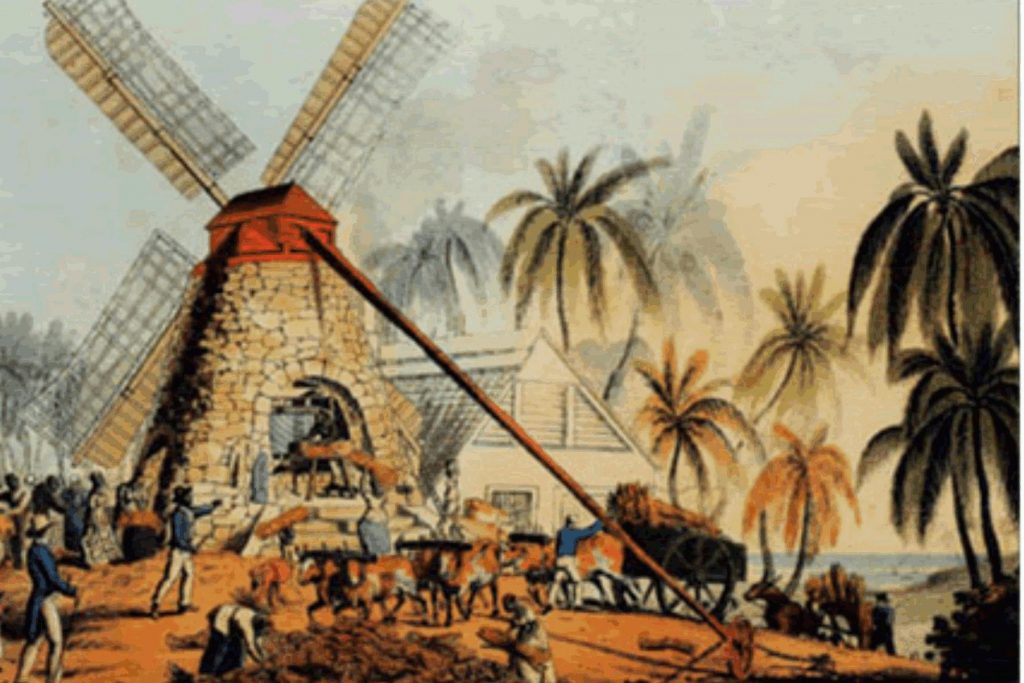About
Type: Extant
Parish: St.Paul
Founding date: 1750
See on Google Maps!

Current Status
This estate later converted to steam. The mill has been converted into an apartment and very tastefully done. It is now the home of Hugh Bailey, renowned sailor and owner of the marina in Falmouth harbour.
Estate Related History/Timeline
1640: re: the Legend of Ding Dong Nook. The Governor, Edward Warner, resided at Falmouth Bay and was particularly vulnerable in regard to Carib attacks. It was at night when the Caribs attacked and after a terrible fight retreated and carried with them the Governor’s wife and two small children. As they ran through the bush, the youngest child could not be quieted and one of the ferocious Caribs swung the child against a rock bashing its brains. This rock used to be pointed out on the estate known as Patterson’s, belonging to the Hon. John Athill.
Patterson’s was also honoured by a visit from William IV of England who in 1798, passed a night there. Antigua & the Antiguans p. 12.
1851: The Antigua Almanac shows Patterson and Horsford’s of 407 acres belonging to Horace Turner.
In the 1930’s the Manager of Patterson’s was Captain Geoffrey Downing. Captain Downing prior to moving to Antigua, managed Barbuda for many years. Connie Jeffrey, his daughter, who was age 10-12 remembers life on the estate fondly where she felt she was treated like a little princess. Her brother Philip Downing married one of the Lake girls from the sugar factory.
One of her favourite times was when there was a “lift” on.
“Having a lift” meant you went to help harvest the cane and in those days everyone helped each other without money changing hands. The mid day meal must be provided however, and a fire would be built under a tree in the fields, with three stones to balance a kerosene can on in which the fungi was made. When it was ready shiney fungi balls would be tossed in butter in half a calabash and passed out with whatever meat kind was brought down precooked in buckets, usually goat. The cut cane was then stacked at a siding to await the loco for transfer to the factory. This was before the days of Unions when neighbours were a lot more neighbourly.
Connie Jeffrey.
Patterson’s and Dimsdale were big lime producing estates.
Women grated the limes to produce the lime oil which was an expensive commodity, then the limes were crushed to produce the juice. Everything was exported to England. Both these estates were producing limes up until about 1948, when Jim Pigott was managing it for Dr. Herd’s daughter. Sir George Walter.
The British West Indies Year Book – 1929
“Limes – the following lime products were exported during 1929:
Green limes ……………………….. 190 bcl. …….. 238 GBP
Raw lime juice ……………………. 1120 gls. …… 56 GBP
Concentrated lime juice ………. 1440 gls. ….. 300 GBP
Lime oil …………………………………108 gls. …… 1215 GBP
Increased interest continues to be shown in lime cultivation and during 1929 a large estate in the southwest part of the island was acquired for planting under this crop.”
1941: Antigua Sugar Factory, Ltd. Cane Returns for 1941 Crop. Patterson’s. Estimated 600 tons, – acres estate, 54 acres peasants on the estate, tons of cane delivered 314.
A quote from Hewlester A. Samuel, Sr. “The Birth of the Village of Liberta, Antigua.
“Patterson’s was a 407-acre estate in the 1700s. Pattersons owned land all over Antigua during its early colonization. John Patterson might have been the first Patterson to own the estate and give it his name. Originally, the estate was not as large as it is today, but through land packaging, which was very common in the New World during colonization, they acquired Horsford’s, and the two estates were combined to become Patterson/Horsford. After the abolition of slavery, the estate went out of cultivation and whoever owned it let it out to peasant farmers.
Patterson is directly west of Falmouth and extends westward to Sugar Loaf. Cherry Hill is on the southwest side of the estate as is Bailey Hill, which was owned by the Baileys of Falmouth in the eighteenth century. A certain amount of Patterson’s abuts beautiful Falmouth Bay. On the north side of the estate are rugged hills that extend all the way to Liberta. The southern section of the estate is very flat and abuts the beach west of Falmouth. According to Vere Langford Oliver, during the nineteenth century, Horace Turner and William H. Moore owned the estate.
A number of things stand out in our minds about this estate – the large lime fields where limes were process, guava trees and the many coconut trees near the shore. There was a lime kiln where white lime was made, which was used to paint wattle and daub houses in the surrounding villages. The ever-present sugar windmills can still be seen on at least two locations on the estate. In both cases they were built on the higher elevations so they would be more productive.”
Enslaved People’s History
Based on contemporary research, we have little information to share about the enslaved peoples from this plantation at this time. We will continue our quest for more information about these vital individuals.
Ownership Chronology
Ownership from 1750 George Horsford
- 1790’s: The Hon. John Athill
- 1834: George Athill
- 1843: W.H. Moore
- 1851: Horace Turner
- 1933: D.S. Herd
- 1900c: Hugh Bailey